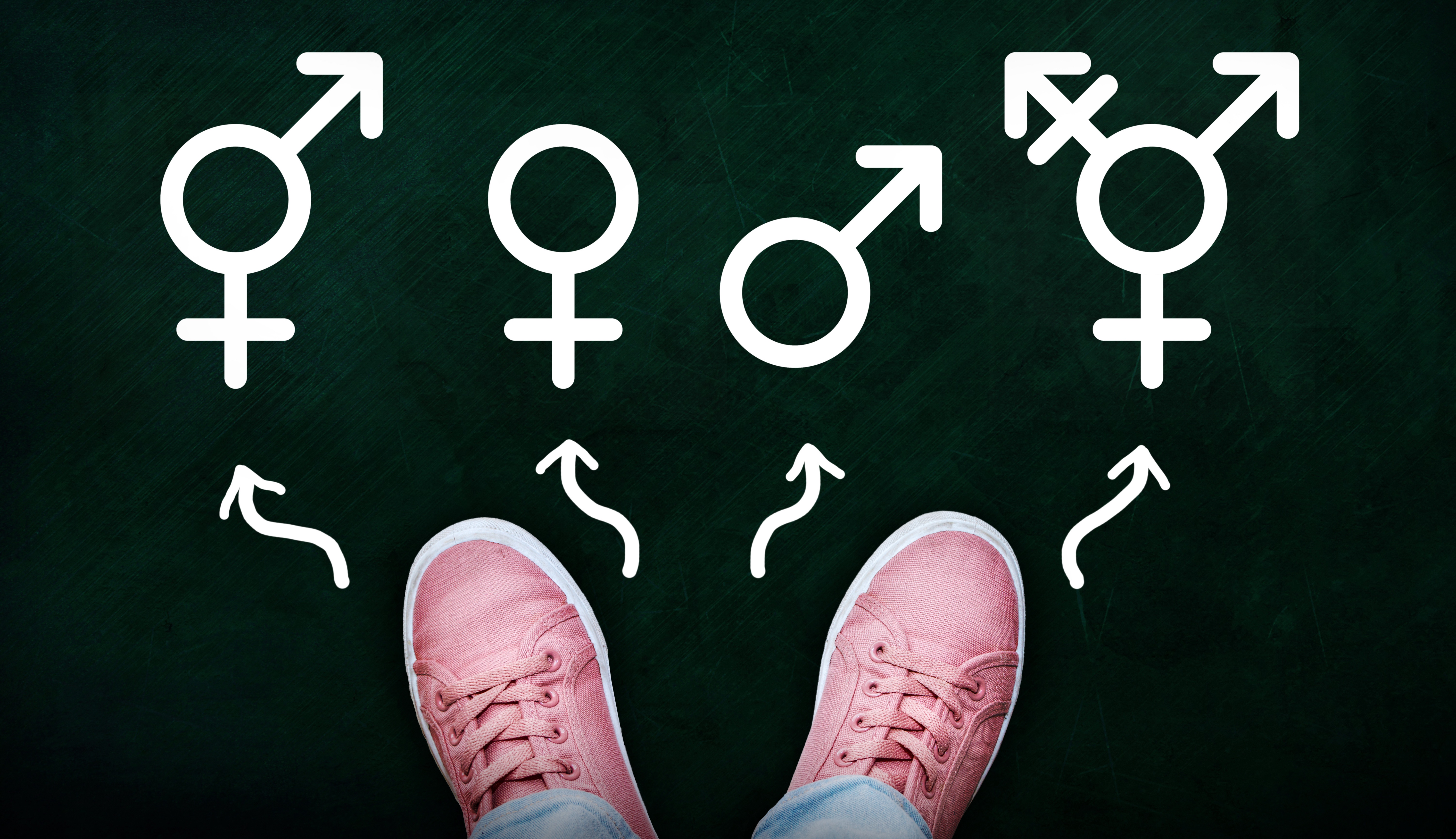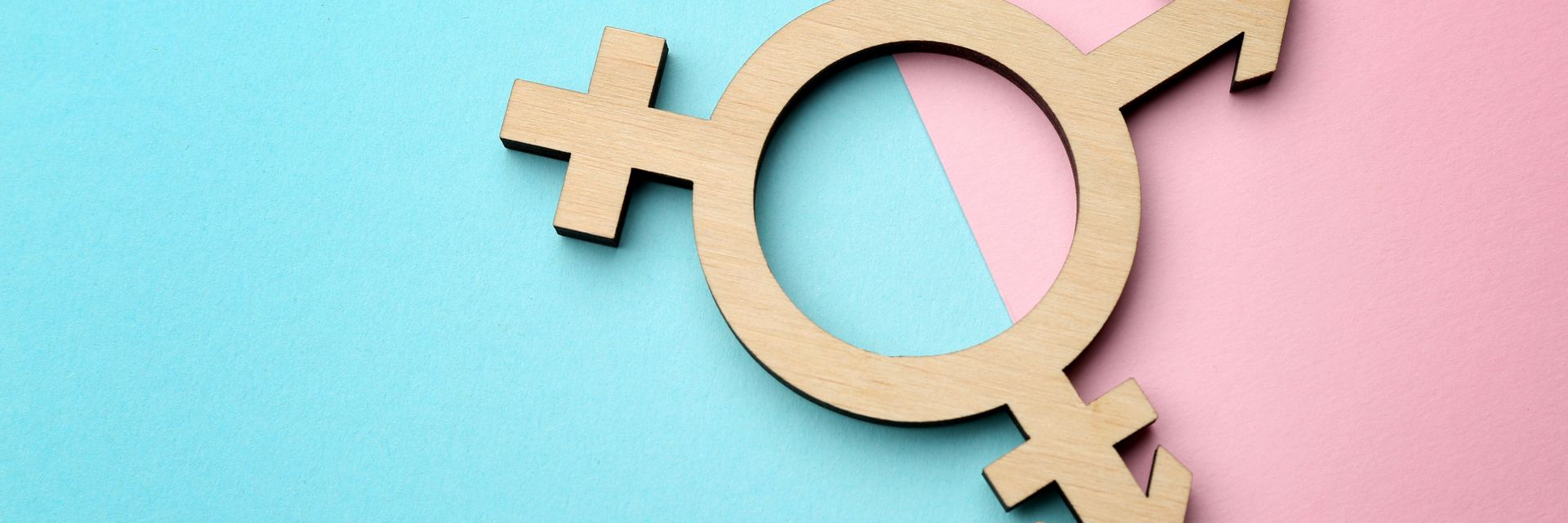Despite case histories that show sometimes horrific results, surgically altering the sex of infants born with ambiguous genitalia – intersex – is still common.
◊
There are between 1,800 and 2,500 births every year in the United States alone that are classified as intersex, that is, when an infant’s sex cannot be clearly discerned at birth. Historically termed hermaphroditic, this human variation is defined by the presence of sex organs of both biological sexes. It’s estimated there are approximately 230,000 intersex individuals now living in the U.S.
This is the story of those thousands of children born intersex, and of one, David Reimer, who was not. And it’s the story of one professional, John Money, a psychologist but not a physician or surgeon, who sought to advance his career by treating children who were born intersex – and treating one who was not.
This is also a cautionary tale of what can happen when a man with near-absolute power attempts to turn children into test subjects in order to “prove” his ultimately discredited theory about gender determination, and the damaging and damning legacy he left behind.
For more on the lives of intersex individuals, check out the MagellanTV documentary Intersexion.
John Money and ‘Nature vs. Nurture’ in Intersex Children
John Money was a man on a mission. Trained as a psychologist in the 1940s, he took a keen interest in infants and was especially intrigued by a very uncommon occurrence: children born with ambiguous genitalia. He developed a theory concerning these kids’ treatment that challenged nature’s role in shaping children’s “gender identity” – their innate sense of being boys or girls.
In a 1955 paper, Money postulated that “sexuality is undifferentiated at birth.” He asserted that children are born devoid of sex or gender awareness and that their gender characteristics, associated with masculinity or femininity, develop solely through their upbringing – in other words, through nurture. Further, he proposed that a child’s gender identity could be changed through a combination of medical and psychological intervention.
He was not first to the “nurture theory.” Philosophers including John Stuart Mill and 20th-century feminists including Simone de Beauvoir had proposed similar ideas. It was Money’s claim that one’s gender could be determined that brought him attention.
Today, intersex advocates, activists, and members of the transgender community vehemently contest Money’s provocative theory. In the 21st century, this has been debunked by advances in scientific research and by the lived experiences of trans and intersex people, who understand that gender identity – self-identity – cannot be manipulated by a team of “experts.”
During the mid-20th century, unfortunately, these voices were absent. Money built his career and wielded substantial influence through his “gender determination” theory. At the time, few scientists had conducted comprehensive studies on those born intersex, giving Money an open field to propagate his treatment methodology for intersex infants.
Money’s Interests Take Root at Johns Hopkins’ Gender Identity Clinic
While serving on the faculty of Johns Hopkins University in Baltimore, Maryland, Money played a pivotal role in founding the university’s Gender Identity Clinic in 1966. This was the nation’s first treatment center for individuals seeking to align their sex with their gender identity, specifically adult transgender men and women. While not a doctor, Money guided the medical team conducting what is now called “gender-affirming” surgery to complete the transformation from male to female and vice versa.
John Money’s work helped psychologists develop and understand the meaning of “gender identity,” thus playing a significant role in establishing the importance of acknowledging one’s sense of gender.
Through it all, Money’s primary fascination lay with the early development of intersex infants and children. Recognizing an opportunity to explore an under-researched field, he became engrossed in the medical care of these children from the neonatal stage until what he dubbed the “gender identity gate” had opened. Money contended that this gate, the point at which children begin to form their gender identities, typically occurs around age two. Before this age, he believed children to be entirely “gender-fluid,” susceptible to imprinting in either gender direction based on environmental cues.

Give children toy guns, cowboy attire, and trucks to play with, and they would assimilate into boys, he theorized. Encourage toddlers with frilly pink attire, baby dolls, and maternal objects, and they would gravitate toward girlhood.
Money Develops Protocols for Treating Intersex Infants and Children
Recognizing that parents might be shocked that doctors could not determine the sex of their children, Money developed protocols for hospitals. These protocols aimed to “adjust” children’s sex organs to resemble either male or female bodies. For intersex children judged to be girls, this involved castration, removal of testes, and construction of a rudimentary vulva. For infants deemed to be male, a larger-than-average clitoris could be molded into a rudimentary penis, with internal female organs removed.
But Money was not content with these practices alone. He was resolute in his quest to find a case that would help him prove his theory regarding the “gender identity gate.” One day in early 1967, seemingly perfect test subjects were dropped in his lap when the parents of identical twin boys reached out to Money in desperation.
One of their twins had suffered a horrifying medical accident during circumcision to correct phimosis, a condition that had caused the closure of both boys’ foreskins, leading to difficulties with urination. During the first child’s circumcision, doctors used a cauterizing knife rather than the standard scalpel. An electrical discharge occurred, resulting in the incineration of the boy’s penis. The circumcision for the second boy was swiftly canceled. The parents, residing in rural Canada and grappling with the outcome of the botched procedure, soon stumbled upon a televised interview with Money in December 1966. In this interview, Money outlined his surgical remedy for intersex children.
Money Seeks to Prove His Theory on the Reimer Twins
The boy, whom we’ll call by his adult name, David Reimer, was not intersex; his sex organs were unequivocally male at birth. It was only due to the tragic medical accident that he lost his penis. Nevertheless, David’s parents, yearning for a set of normal, healthy twins, contacted Money seeking his assistance.
At birth, David’s given name was Bruce. Because his parents changed his name at such an early age, David never used his birth name. For this reason, he is called by his preferred name, David, in this article.
Money seized the opportunity. Having been publicly criticized in 1965 by sexologist Milton Diamond, who refuted Money’s all-nurture/no-nature theory, Money was in dire need of a scientific experiment that would substantiate his claim regarding children’s lifelong gender identity. In 1967, when the Reimers first visited Money in Baltimore, David and his twin Brian were 22 months old.
During their initial session, Money outlined his medical and behavioral objectives for the Reimer family, refraining from mentioning any potential downsides, perhaps because he genuinely believed there wouldn’t be any. Money proposed an experiment, raising David as a girl and implementing surgeries and hormone therapy on the child.

Thus, at 22 months, David became “Brenda.” The experiment included an immediate bilateral orchiectomy, surgically removing his penis and testes while constructing labia around his urethra. Money was persuasive in convincing the Reimers that this was not only the best but the only way to ensure Brenda’s happiness. The Reimer family felt they had no choice but to agree.
The Traumatic Effect of Money’s Experiments on the Reimer Twins
[Editor’s note: This section of the article includes explicit descriptions that might not be suitable for all readers, especially children.]
Money also suggested regular check-ins with the twins, so the Reimers traveled to Maryland annually, handing the twins over to Money for his behavioral sessions. It was during these sessions that the trauma deepened for Brenda and Brian.
In these sessions, the twins were instructed to undress and closely examine each other’s genitals. Money showed them explicit photos of naked adult women and even films depicting sexual intercourse. He went so far as to coerce the children to simulate sex acts with each other. Over a 10-year period of annual visits, before the twins reached puberty, they were instructed to thrust their exposed genitals at each other under Money’s stern direction. “Don’t you want to be a normal girl?” Money shouted at the petrified Brenda. On at least one occasion, as David later recalled, Money invited colleagues to observe and even photograph the sessions.
Life at the Reimer home was no better. The parents never disclosed Brenda’s life prior to surgery. The child was dressed as a girl and provided toys such as a baby carriage and a tea set. However, Brenda resisted these efforts from a preschool age. She yearned to play with Brian’s toys, but the parents, adhering to Money’s instructions, redirected their child toward girls’ play.

Money Misrepresents the Results of His Experiment
Challenges intensified when Brenda began attending school. Neither teachers nor peers ever accepted Brenda as a girl. According to Brian, the bullying and abuse were relentless. Brenda did not look or act like a girl, and the hurtful nickname “Gorilla” became a persistent reminder of this.
Nonetheless, the Reimer family remained committed to Money’s program. Money, in turn, published paper after paper proclaiming the success of the transition. In his papers, he misrepresented his findings in order to present the human experiment as a long-term success story. He declared that the transformation from David to “Brenda” was exemplary, demonstrating the unassailable proof of his “all-nurture” theory.
David, who never felt comfortable with a girl’s name, resisted from the outset. As he approached puberty, he adamantly refused to take female hormone pills provided by Money’s clinic. David’s parents resorted to disguising the pills to deceive him into taking them. The pills did their work, and David soon developed breasts and acquired additional fat around his lower abdomen and hips. This pushed David to the brink. At the age of 13, when it was time for another trip to Baltimore, he threatened to take his own life.
Faced with David’s grave declaration, his parents broke their silence and revealed the truth about the gender experiment. Unsurprisingly, David was furious, but he was also relieved to learn that his inner feelings had been correct all along: He never was a girl. He immediately took steps to reclaim his boyhood, demanding surgeries to remove his breast tissue and rebuild male genitalia.
However, David’s life did not significantly improve. A girl he dated disclosed his unfortunate genital situation to acquaintances, leading to further ostracizing by his peers. Years later, he married a woman with children, harboring hopes of becoming a husband and father, roles in which he believed he would excel.
This newfound life proved untenable. His deeply rooted trauma rendered family life challenging, and employment was unsustainable. In 2004, a few days after his wife informed him she was leaving with their children, David committed suicide in a parking lot near their home. In a somber reminder of Money’s effect on the twins, David’s brother Brian had died two years earlier from a barbiturate overdose.
Money’s Legacy – and an Alternative Approach to Intersex Protocols
In 1997, an extensive story published in Rolling Stone exposed Money’s discredited work. Money then blamed his rivals for conspiring against him and never took responsibility for the harm he had caused. He died of natural causes in 2006.
The medical procedures applied to David Reimer may seem cruel and profoundly insensitive by people who acknowledge and accept individuals who exist outside the standard confines of gender and sex. Yet, astonishingly, these practices, initiated in the 1960s, continue to be applied as standard procedure in many hospitals and medical practices across the United States and around the world. It remains quite common for doctors to inform distraught parents that their children will be happier with surgical interventions. Worse, some U.S. state legislatures are considering laws that would require such surgery for intersexual children without considering the trauma it often causes.

This intersex-inclusive LGBTQIA+ pride flag was designed by Valentino Vecchietti in 2021. (Source: Nikki, via Wikimedia Commons)
There is an alternative approach gaining ground. Sexologist Milton Diamond, an ally of the intersex community, has advocated for 25 guidelines that aim to eliminate surgeries the intersex community views as invasive, unnecessary, and unethical. For nonprofessional readers, the guidelines can be distilled to three clear recommendations:
- Physicians should refrain from performing surgery on intersex infants, instead referring the parents and children to long-term counseling.
- As they develop, assign intersex children to the gender they seem naturally inclined toward.
- Promote openness and avoid shame when dealing with the issue, and, when possible, encourage intersex children to socialize with others who share the condition.
What is the Future for Intersex and Trans People?
In our current polarized era, it is distressing that issues surrounding intersexuality have been politicized as part of the ongoing “culture wars.” What is urgently needed is the recognition that intersex people have the same rights as others to make informed choices regarding their lives. These include the timing of and decisions related to sex-assignment surgery. Milton Diamond’s guidelines should be adopted by all medical professionals to replace the outdated and often callous protocols established by John Money.
The tragic story of David Reimer and his family is an extreme example of the consequences of those practices, but it is far from the only instance in which intersex children have been traumatized by doctors’ adherence to inhumane – and medically unwarranted – “treatment” regimens. The way to a brighter future lies in acceptance, patience, and compassion for children who come into the world as intersexual, along with medical and psychological protocols based on the best currently available science.
Suicide is a public health issue. If you or someone you know is exhibiting warning signs of suicide, call the U.S. National Suicide Prevention Lifeline at 800-273-TALK (8255) or seek out similar services in the country where you live.
Ω
Kevin Martin is Senior Writer and Associate Editor for MagellanTV. Having had a long career as a journalist and communications specialist, he writes on various topics, many in the areas of Art and Culture, Current History, and Space and Astronomy. He is the co-editor of My Body Is Paper: Stories and Poems by Gil Cuadros (forthcoming from City Lights). He resides in Glendale, California.
Title Image credit: Transgender symbol on color background by Pixel-Shot from Adobe Stock

